In-situ study on nutrient release fluxes from shallow lake sediments under wind-driven waves*
2016-10-14YuanjunSUN孙远军ShiqiangLU卢士强WeiqingLIN林卫青DaozengWANG王道增JingyuFAN樊靖郁ZhuLI李柱
Yuan-jun SUN (孙远军),Shi-qiang LU (卢士强),Wei-qing LIN (林卫青),Dao-zeng WANG (王道增),Jing-yu FAN (樊靖郁),Zhu LI (李柱)
1.Shanghai Academy of Environmental Sciences,Shanghai 201200,China,E-mail:sunyuanjun992@126.com
2.Institute of Applied Mathematics and Mechanics and Shanghai Key Laboratory of Mechanics in Energy Engineering,Shanghai University,Shanghai 200072,China
3.School of Environmental Science and Engineering,Tongji University,Shanghai 200092,China
In-situ study on nutrient release fluxes from shallow lake sediments under wind-driven waves*
Yuan-jun SUN (孙远军)1,Shi-qiang LU (卢士强)1,Wei-qing LIN (林卫青)1,Dao-zeng WANG (王道增)2,Jing-yu FAN (樊靖郁)2,Zhu LI (李柱)3
1.Shanghai Academy of Environmental Sciences,Shanghai 201200,China,E-mail:sunyuanjun992@126.com
2.Institute of Applied Mathematics and Mechanics and Shanghai Key Laboratory of Mechanics in Energy Engineering,Shanghai University,Shanghai 200072,China
3.School of Environmental Science and Engineering,Tongji University,Shanghai 200092,China
An in-situ benthic device to measure nutrient fluxes across the sediment-water interface has been developed and successfully used to study both static and dynamic fluxes of nutrients in Dianshan Lake,China.The result shows that the surface sediments of Dianshan Lake were resuspended under wind-driven waves.DOC entered into overlying water only when sediments were resuspended.The average DOC flux was 105.78 mg/(m2d),while the static and dynamic POC fluxes were 48.22 mg/(m2d) and 10 273.20 mg/(m2d),respectively.Ammonia and nitrate had no significant release,and the dynamic flux of TN was 87.11 mg/(m2d).The release of phosphorus was the most evident,and the dynamic fluxes of SRP and DTP were 20.22 mg/(m2d) and 21.78 mg/(m2d),2.2 and 2.0 times higher than the static fluxes,respectively.Dissolved phosphorus was released mainly as SRP,and phosphorus release from the sediments in Dianshan Lake cannot be ignored.
shallow lake,wind-induced wave,hydraulic disturbance,nutrient fluxes,in-situ experiment
Introduction
Dianshan Lake is located in the downstream of the Taihu Lake basin (31o04ʹN-31o12ʹN,120 o53ʹE-121o01ʹE),west of Shanghai,China.The monthly averaged water temperature in Dianshan Lake ranges from≤ 0 o C to 10o C in winter,to > 22 o C in summer,and between 10o C -22o C in spring or autumn.The annual average wind speed in Dianshan Lake is 3.7 m/s with the monthly average of 3.8 m/s-4.1 m/s from February to May,and 3.0 m/s-3.5 m/s from September toDecember.It has a surface area of 62 km2with maximum length of approximately 14.5 km and width of 8.1 km.Dianshan Lake is a shallow water body with average depth of 2.1 m and maximum depth of 3.6 m.It is one of the five largest natural freshwater lakes in China and a major source of drinking water for Shanghai[1].However,with the rapid economic development in Shanghai and adjacent provinces,the water quality in Dianshan Lake has deteriorated in recent years with increasing eutrophication and frequent algal blooms[2].
As a result of excessive anthropogenic nutrient loading,especially nitrogen and phosphorus,algal blooms in lakes[3-5].Controlling nutrient input is the most effective way of reducing the risk of algal blooms[6],and great efforts have been made to reduce the external nutrient loading to Dianshan Lake.When the external sources are under control,the nutrients stored in the sediments would become the main sources of nutrients in lake[7-9].Kang et al.[10,11]studied nutrient concentrations and distribution characteristics in Dianshan Lake sediments,and found that total pho-sphorus contents,ranged from 266 mg/kg to 1 146 mg/kg,and carbon and nitrogen contents were significantly higher than those values of twenty years ago.As a potential pollution source,the impact of the sediments on water quality and internal nutrient recycling cannot be ignored.Hence,it is important to quantify the nutrient fluxes across sediment-water interface and enhance our understanding of the governing processes.
Currently,the studies on nutrient release from the sediments mostly focus on laboratory experiments,such as using beakers,conical bottles and other small containers for static release experiments,or using flumes for dynamic release experiments to simulate dynamic conditions.Laboratory experiments are relatively easy to operate and control,and the results have greatly enhanced our understanding of the nutrient release from the sediments.But in the process of sediment collection and transport,the original structure and layer of the sediments are easily disturbed,and the environmental conditions such as biological communities,temperature and redox potential may also change.It is difficult to mimic the in-situ nutrient fluxes by laboratory experiments.The in-situ monitoring method of nutrient release fluxes from sediments mainly includes box culture and continuous flow culture.The former uses a box incubator.A box with open bottom is vertically put into sediments surface to form a closed environment,and then pollutant flux from sediments is monitored within the incubator.The latter is an open system.Overlying water constantly and continuously flow through a certain area of the bottom sediment,and pollutant flux from the sediments is estimated by the difference of the pollutant concentration between inflow and outflow water.The two methods usually cannot be used to study the impact of external factors such as storms on pollutant release from sediments.The equipment that we designed here belongs to the box culture method.In order to study the impact of external storms on nutrient flux from sediments,we punched series holes on the upper panel of the underwater box,and by opening or closing the holes,we can assess how nutrient flux from sediments may be affected by waves generated by external storms.
Currently,there are no reports on nutrient release from Dianshan Lake sediments using in-situ methods.Chao et al.[12-14]had continuously monitored the vertical profiles of nutrient concentrations in Taihu Lake under different waves,nutrient concentration variation characteristics,and the contribution of nutrient release caused by wave turbulence.These studies were not carried out in a closed system above the lake sediments,and therefore could be only used to qualitatively assess the effects on nutrients release from the sediments under different wave disturbances without nutriant fluxes.In this study,we designed a device to study nutrient flux across water-sediment interface by in-situ monitoring,and successfully applied it in Dianshan Lake.The in-situ experiment was conducted at the southeast corner of Dianshan Lake (GPS location:31o04ʹ40.65ʺ,120o58ʹ08.57ʺ).The area was originally used for caged fish culture.In order to improve water quality in Dianshan Lake,fish cage culture was banned by the government.

Fig.1 Schematic sketch of the benthic in-situ system
1.Experimental device and methods
1.1 In-situ measurement device
To obtain the nutrient fluxes across the sedimentwater interface,we developed an in-situ benthic equipment using acrylic boxes.It is made up of an above water box,an underwater box,a variable set of tubes to connect its inflow and outflow end,a pump,a flow meter and a set of probes for water temperature,pH,redox potential and turbidity measurements (Fig.1).Each part is tightly connected by flexible pipes.The water in the underwater box is pumped into the above water box,and the circulation is maintained by the pump to ensure that water contained in the underwater box is thoroughly and continuously mixed.The above water box is a cylinder,the length and diameter is 0.25 m and 0.18 m,respectively.The box has four holes in upper panel to place electrodes for measuring physical parameters.The underwater box is a cuboid,its length,width and height is 0.90 m,0.60 m and 0.64 m,respectively.The box has an opening at the bottom (0.54 m2),a vertical cutting edge,and exterior flanges.The underwater box was carefully pushed into the sediment until the flanges rested on the sediment surface,preventing further penetration.To increase the flow rate above the sediment-water interface,the underwater box is separated into three units.Afterwards the ambient water was pumped through the system with a maximum flow rate of 1.5 m3/h which corresponds to a flow velocity of 0.013 m/s within the unit.The total volume of the system is 0.35 m3.
The sediment-water interactions play an important role in nutrient cycling.Nutrients release into overlying water in two ways:static release without sedi-ment disturbance and dynamic release caused by sediment resuspension.Dianshan Lake is a typical shallow lake,and the sediment resuspension caused by waves often occurs.As a result,dynamic nutrient release may be more significant compared with the static release.In this regard,an investigation of the dynamic release properties of nutrients is useful in understanding and controlling eutrophication.In order to study the contribution of the static and dynamic release to nutrient fluxes,we designed a bilayer organic top panel for the underwater box,punched 117 holes (0.015 mΦ) on the panel,and kept the underwater box to open or not by pushing the panel left or right.When the holes were closed,the underwater box was completely closed without outside interference,and we measured the static fluxes of nutrients,when the holes were open,the sediments covered by the underwater box might be resuspended by wind-induced waves,and we measured the dynamic fluxes of nutrients under this condition.
1.2 In-situ experiment methods
The in-situ monitoring system was kept running until all probes showed constant values for several minutes.Before closing the connection,water samples were taken at the outflow end of the system.The samples were later analyzed in the laboratory for nutrient concentrations.After closing the connection,the ambient water was circled through the system with the changes of dissolved oxygen,pH,turbidity and conductivity.During the experiment,photosynthesis was prevented by darkening the system.Immediately after opening the connection at the end of each experiment,samples of the water discharging out of the system were collected in a 1 L bottle.Water samples were indicated with no disturbance during placement,and were kept cool and dark prior to chemical analysis.Two different series of experiments were carried out.In the first,from November 7 to November 12 (5 d,dynamic releasing experiment),the underwater part was open,water in the underwater box was affected by wind-induced waves,and corresponded with watersediment interface under ambient conditions.In the second,from November 11 to November 18 (6 d,static releasing experiment),the underwater part was completely closed,water in the underwater box was not affected by wind-induced waves.
1.3 Estimation of nutrient flux
Water samples for nutrient analysis were collected 3 times every day.Physical and chemical parameters,such as suspended solids (SS),ammonia(NH3-N),total nitrogen (TN),nitrate (NO3-N),soluble reactive phosphorus (SRP),total dissolved phosphate(DTP)[15],total organic carbon (TOC) and dissolved organic carbon (DOC) were measured by Multi N/C3100 Analyzers.The detection limit for TOC or DOC was 0.004 mg/L.Relative standard deviation(RSD) is 2%.Net nutrient fluxes are calculated from changes in concentrations over time.
The method for nutrient fluxes can be summarized as follows:(1) calculate for the rate of change of compound concentration,(2) correct for water volume and bottom surface area of the underwater box,and (3)extrapolate to 24 h.The estimation of nutrient released/retained was calculated by the product of the volume of the water column and the difference in concentrations of the water column as shown below[16].

whereJ is the nutrient flux,Ctis the final nutrient concentration of the overlying water,Ct-1is the initial nutrient concentratio of the overlying water,Vtis the total volume of the water column overlying the sediment,Csis the nutrient concentration of the water replaced for sampling,Vsis the volume of water taken for sampling,A is the cross-sectional area of the underwater box andt is the duration of study.

Fig.2 Wind velocity (WV) and SS during the static releasing experiment
2.Results and discussion
2.1 Characteristics of wind-induced waves and temporal variations in SS concentration
Figure 2 shows the measured variations in wind velocity and SS concentration during the static experiment.Wind speed was steadily around 4.0 m/s,and then increased to 6.3 m/s on November 17.Because of disturbance during placement,the surface sediments within the underwater box may be resuspended.SS concentration decreased from 98.0 mg/L to 23.5 mg/L,and stabilized after 64.5 h.When the underwater box was closed,wave disturbance had no impact on the water in the underwater box.In this case,the nutrientflux from sediments was static flux.Once SS content was stabilized,we began to calculate the release flux of nutrients.
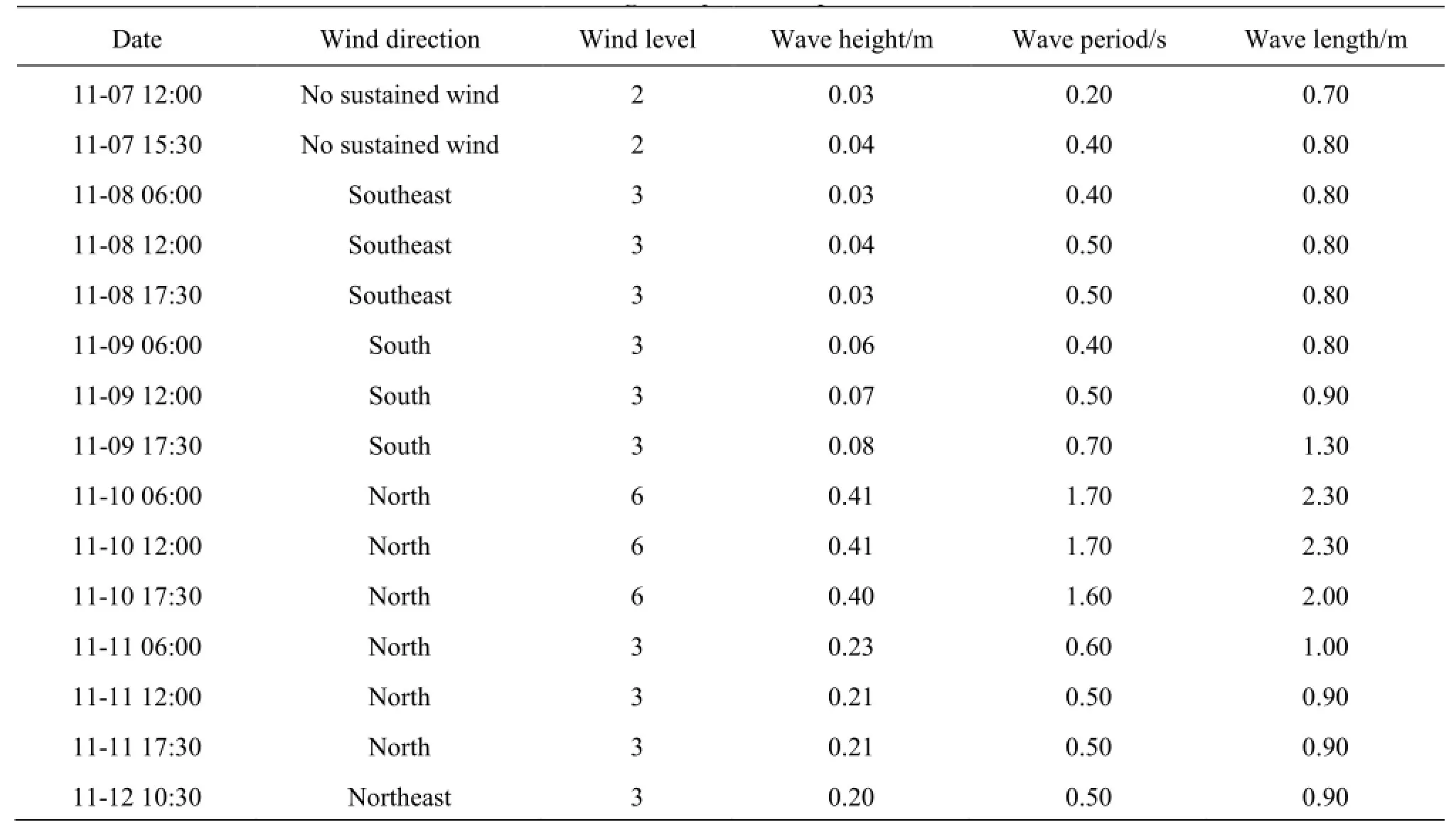
Table 1 Wave characteristics in Dianshan Lake during the dynamic experiment

Fig.3 Wind velocity and SS during the dynamic releasing experiment
During the dynamic experiment,wind velocity was steady early,but rapidly increased to 12.9 m/s on November 10,and maintained a high value during the day.Wind velocity decreased to 7.4 m/s on November 11,and then gradually decreased to the previous level.We observed the wind and waves in Dianshan Lake at the time,and systematically studied the characteristics of wave fields such as wave height,wave period and wave length under different conditions (e.g.,water depth,wind velocity and wind direction) using the SWAN model.Combined with previous research,we estimated the wave characteristics at the experiment station during the dynamic experiment using the average depth of 2.4 m,and the result was shown in Table 1.
Figure 3 shows the measured variations in wind velocity and SS concentration during the dynamic releasing experiment.As the wind velocity increases,particulate matters in surface sediment layer released into overlying water along with resuspended sediments.SS content quickly increased from 15.8 mg/L to 230.1 mg/L,which increased about 13.56 times,and gradually decreased to 79.1 mg/L when wind velocity decreased on November 11.Nutrient dynamic release flux was calculated from the point when SS content increased rapidly.Wind velocity and SS content showed a significant positive correlation (R =0.93,P<0.0001,n=15).In Dianshan Lake,increase of wind velocity and associated wave height may result in physical disturbance at the sediment-water interface,which caused a large amount of sediments to resuspend into overlying water.Trolle et al.[17]also found similar phenomenon in the experiment of nutrient vertical distribution in Taihu Lake under different waves.
2.2 Change of carbon nutrients concentration in overlying water
Figure 4 shows the variations in DOC and POC concentration during the static experiment.DOC concentration changed little after the disturbance caused by placing the underwater box,and it was varied from 3.98 mg/L to 4.73 mg/L,showing a slightly downward trend with the average release flux of -50.71 mg/(m2d).In the early phase,POC decreased drastically with the decrease of SS.When larger particles settled down,SS concentration was gradually stabilized,but POC concentration rose slightly from 1.1 mg/L to 1.25 mg/L,with the average release flux of 48.22 mg/(m2d).The source of organic particulate matter in shallow lakes is very complex,including large particles with good sedimentation behavior and colloidal substances produced by aquatic organisms' activities.It can be seen from the results of static experiment that with little hydraulic disturbance DOC settled from overlying water to sediments,but small particulate or colloidal organic matter showed the opposite.Sun et al.[18]had carried out a flume experiment and also found that the proportion of small density organic matter and fine granular colloidal substances in suspended material increased after wave disturbance continued for some time.
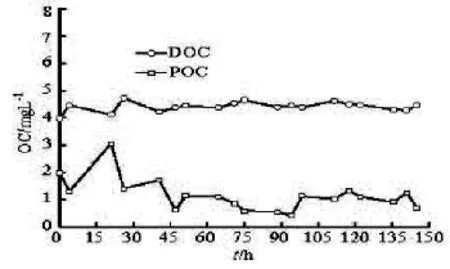
Fig.4 Organic carbon concentration (OC) during the static releasing experiment
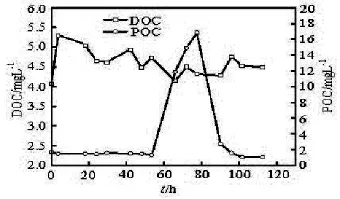
Fig.5 Organic carbon concentration during the dynamic releasing experiment
Figure 5 shows the variations in DOC and POC concentration during the dynamic releasing experiment.After sediments were resuspended,POC concentration rapidly increased from 1.35 mg/L to 11.88 mg/L as SS concentration increased.However,the proportion of organic matter in SS showed an opposite trend.The POC/SS ratio decreased from 0.09 to 0.05,which indicates that a large number of inorganic particles also went into the water body along with sediments resuspension.However,after suspension,DOC concentration didn't increase sharply as POC.DOC decreased from 4.73 mg/L to 4.00 mg/L initially,and then increased slowly when the wave disturbance stopped.A large number of particles entered into the overlying water along with sediment resuspension,and the amount of DOC adsorbed by suspended particles was far more than that by diffusion from pore water and desorption from attached particles,indicating that DOC concentration decreased.At the end of wave disturbance,the resuspended particles settled to the surface sediment layer again,and thus adsorption process was weakened while desorption and diffusion processes were dominated.By this time DOC released upward into overlying water from sediments.Zhu et al.[19]had carried out a flume experiment on sediments in Taihu Lake,and got the similar results after 3.5 h.DOC concentration decreased when sand was resuspened after disturbing for 2 h,small disturbance caused DOC decreased approximately 33%,while big disturbance caused a decrease of about 52%.During the course of sediment resuspension,because of wave disturbing,the average release fluxes of POC and DOC were 10 273.20 mg/(m2d) and 105.78 mg/(m2d),respectively.
Under the static condition,the diffusion of DOC into overlying water from sediments was not evident,and in contrast,it actually settled from overlying water to sediments due to adsorption and biological uptake.Only when the sediment resuspension occurred,DOC migrated upward.From the comparison of DOC release characteristics under the two conditions,it can be deduced that DOC concentration in the pore water of Dianshan Lake surface sediment layer is not high.Under the static condition,there was only small scale bioturbation at the sediment-water surface,and amorphous organic macromolecules floc with small specific weight,organic debris and colloidal organic matter may be resuspended.Once wave disturbance becomes strenuous,particles with large specific weight were also resuspended from surface sediment layer,and POC flux increased by 212.05 times.
2.3 Temporal variations of nitrogen nutrients concentration in overlying water
Dissolved inorganic nitrogen in natural water mainly comprises ammonium,nitrite and nitrate.As an intermediate product of nitrification process,nitrite is unstable,and it is quickly oxidized to nitrate under aerobic condition.Dissolved oxygen content in Dianshan Lake is high,and nitrification process is very thorough.Nitrate is the main dissolved nitrogen form,followed by ammonium,and nitrite is the least.Therefore,in this study the concentration of nitrite was not monitored.
Figure 6 shows the variations in ammonia,nitrate and total nitrogen concentration during the static expe-riment.TN concentration shows a declining trend,from 2.36 mg/L to 1.93 mg/L.Nitrate has a similar trend as TN,from 1.88 mg/L to 1.72 mg/L.The ratio of nitrate to TN remains within the range of 0.80-0.92,and the two nitrogen species show a significant positive correlation (R =0.92,P<0.0001,n=19),which indicates that nitrate is the main form of nitrogen in Dianshan Lake.Ammonia concentration was very low with a declining trend after the disturbance caused by placing the underwater box was stabilized.The average release fluxes of ammonia,nitrate and TN were -19.13 mg/(m2d),-35.31 mg/(m2d),-50.71 mg/(m2d),respectively,and all three forms of nitrogen nutrients settled from overlying water to sediments.

Fig.6 Nitrogen concentration (NC) during the static releasing experiment
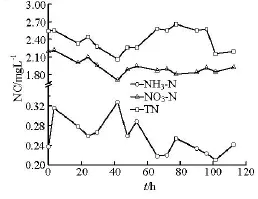
Fig.7 Nitrogen concentration during the dynamic releasing experiment
Figure 7 shows the variations in ammonia,nitrate and TN concentration during the dynamic releasing experiment.After sediments were resuspended,TN concentration rapidly increased from 2.26 mg/L to 2.66 mg/L as SS concentration increased,and then decreased to 2.19 mg/L.Similar to the trend of DOC,due to the adsorption of suspended particles,both dissolved nitrogen decreased after suspension.Nitrate decreased from 1.94 mg/L to 1.86 mg/L while ammonia decreased from 0.29 mg/L to 0.22 mg/L,and their change margins were not obvious.The change trend of TN is similar to SS.In addition,ammonia and nitrate nitrogen did not significantly increase.It can be inferred that the dissolved inorganic nitrogen concentration in surface sediments of Dianshan Lake is not high,and particulate nitrogen is the main form released into overlying water when the sediment resuspension occurs.The average release flux of TN was 87.11 mg/(m2d),while the dynamic release of nitrate and ammonia were not obvious.
From the above experiment results,the sediments of Dianshan Lake are the sink of nitrogen nutrients in water.Only during sediment resuspension under great waves,TN migrates into overlying water mainly in a particulate form,and due to sedimentation TN concentration declines at the end of wave disturbance.Previous studies on nitrogen flux from Dianshan Lake sediments are mainly carried out using laboratory simulation method,and TN static release flux ranges from -55.74 mg/(m2d) to 2.98 mg/(m2d)[20].Wu et al.[21]had carried out an experiment on the static release of endogenous nutrients from Taihu Lake sediments,and found that the release fluxes at most points were negative and increased from -16.0 mg/(m2d)± 17.6 mg/(m2d)to 12.6 mg/(m2d)±6.9 mg/(m2d).When the temperature rose to 15oC,indicating that as the temperature increased,the release flux became higher.Compared to the case in Taihu Lake,the release of nitrogen nutrient in Dianshan Lake is not obvious,and the contribution of nitrogen nutrients to water body is not substantial.

Fig.8 Phosphorus concentration (PC) during the static releasing experiment
2.4 Change of phosphorus concentration in overlying water
Figure 8 shows the variations in SRP and DTP concentration during the static releasing experiment.Both phosphorus concentrations showed an increasing trend without external disturbance.DTP concentration increased from 0.07 mg/L to 0.14 mg/L while SRP concentration increased from 0.06 mg/L to 0.10 mg/L.The average release fluxes of SRP and DTP were 9.33 mg/(m2d) and 10.89 mg/(m2d),respectively.Su et al.[20]had carried out a laboratory experiment to study phosphorus static release fluxes from Dianshan Lake sediments,and the results indicated that pho-sphorus release was significant with the maximum TP flux at 25oC of about 4 mg/(m2d),which was lower than the results of in-situ monitoring experiment.
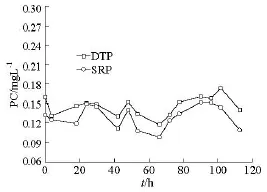
Fig.9 Phosphorus concentration during the dynamic releasing experiment
Figure 9 shows the variations in SRP and DTP concentration during the dynamic releasing experiment.Similar to the trend of DOC and dissolved nitrogen nutrients,both dissolved phosphorus nutrients decreased after suspension.SRP decreased from 0.11 mg/L to 0.10 mg/L while DTP decreased from 0.13 mg/L to 0.12 mg/L,and then they gradually increased till reaching the maximum value during the day after the wind.The average dynamic release fluxes of SRP and DTP were 20.22 mg/(m2d) and 21.78 mg/(m2d),respectively.Zhang et al.[22]had in-situ monitored the change of SRP concentration in Meiliang Bay during a storm,and also found that SRP concentration declined when sediments violently resuspended by strong wind,and then increased to the previous level.Chao et al.[12]had in-situ monitored the change of DTP concentration in Meiliang Bay,but they found that TDP level had no significant change by strong wind.This experiment was carried out in a closed system at the bottom of the lake,the released phosphorus nutrients did not continue to exchange with the overlying water,resulting in an upward trend for SRP and DTP concentrations.During the course of sediment resuspension,the release and settlement mechanisms of nutriants are very complex,and for an open system the concentration of dissolved phosphorus nutrients may have no obvious change.
Figures 8 and 9 showed that both SRP and DTP released from sediments to overlying water under the two conditions.However,the dynamic release flux was significantly greater than the static release flux.When sediment resuspension occurs,SRP release flux was 2.2 times higher than that under the static condition,and DTP release flux was 2.0 times higher than static condition.In 2012,Fan and Wang[23]had carried out flume experiments to study total phosphorus release fluxes from Dianshan Lake sediments,and the results indicated that the dynamic release of resuspension sediment pollutants was about 6 times higher than static release.The POC/SS ratio under the static condition was within the range of 0.53-0.88,while the ratio increased to 0.78-0.98 under the dynamic condition.Therefore,it can be deduced that both SRP and dissolved organic phosphorus release from surface sediments of Dianshan Lake to overlying water under the static condition,but under the static condition the major released form is SRP.Dissolved inorganic phosphorus can be directly utilized by phytoplankton,which plays a key role in lake eutrophication.
By comparing three kinds of nutrient fluxes,it can be found that carbon and nitrogen nutrients release into overlying water when resuspension occurs,and at the end of the hydraulic disturbance,the suspended particles settle and the originally released nutrients re-settle into sediments.Although POC releases under the static condition,but this form of carbon doesn't affect growth of phytoplankton,.Thus,nitrogen and carbon nutrients have no significant impact on eutrophication in Dianshan Lake.Regardless of sediment resuspension,dissolved phosphorus nutrients will continuously release into overlying water,which may have a greater impact on the Dianshan Lake eutrophication.Especially during summer with high temperature,the dynamic release of DTP cannot be ignored when sediment resuspension occurs.Therefore,in order to further improve the water quality of Dianshan Lake and control eutrophication,we can try stabilizing sediments to reduce the rate and quantity of phosphorus nutrient release.
3.Conclusions
As a shallow lake,Dianshan Lake is not obviously influenced by wind-driven current,and is easily impacted by wind-induced wave.In this case,the particulate matters release into overlying water along with sediment resuspension.The nutrients released from Dianshan Lake surface sediments can be characterized as follows:
(1) In Dianshan Lake,the release of DOC from sediments is not obvious,and it migrates upward to overlying water only when sediments are resuspended with the average release flux of 105.78 mg/(m2d).The release of POC is more obvious when resuspension occurs,both large particulate and small particulate organic carbon are simultaneously released into overlying water with the release flux of 10 273.20 mg/(m2d).Under a static condition,only small particulate or colloidal organic matter is released,and the release flux is 48.22 mg/(m2d).
(2) The release amount of nitrogen nutrient from surface sediment layer in Dianshan Lake is not large with the TN release flux of 87.11 mg/(m2d) only when sediments are resuspended,and ammonia,nitrate and TN all migrate from overlying water to sediments.
(3) The release of phosphorus nutrients from surface sediments in Dianshan Lake are the most evident,regardless of sediments resuspension.Dissolved phosphorus nutrients are continuously released into overlying water with the dynamic SRP and DTP release fluxes of 20.22 mg/(m2d) and 21.78 mg/(m2d),2.2 and 2.0 times higher than those in the case of static release,respectively.
(4) When sediment resuspension is caused by strong waves in Dianshan Lake,a large number of particulate matters will be instantaneously released into overlying water,and their adsorption of dissolved nutrients is dominating and the increase of dissolved nutrients lags behind particulate nutrients.
[1]LIN Dong-hai,QIU Yan-ling and HUANG Hong-yan et al.Hyper-spectrum models for monitoring water quality in Dianshan Lake,China[J].Chinese Journal of Oceanology and Limnology,2009,27(1):153-157.
[2]CHENG X.,LI X.P.Long-term changes in nutrients and phytoplankton response in Lake Dianshan a shallow temperate lake in China[J].Journal of Freshwater Ecology,2010,25 (4):549-554.
[3]SUNDARESHWAR P.V.,MORRIS J.T.and KOEPFLER E.K.et al.Phosphorus limitation of coastal ecosystem processes[J].Science,2003,299(5606):563-565.
[4]XU H.,PAERL H.W.and QIN B.et al.Nitrogen and phosphorus inputs control phytoplankton growth in eutrophic Lake Taihu,China[J].Limnology and Oceanography,2010,55(1):420-432.
[5]ABELL J.M.,OZKUNDAKCI D.and HAMILTON D.P.Nitrogen and phosphorus limitation of phytoplankton growth in New Zealand Lakes:Implications for eutrophication control[J].Ecosystems,2010,13(7):966-977.
[6]BROOKES J.D.,CAREY C.C.Resilience to blooms[J].Science,2011,334(6052):46-47.
[7]ÖZKUNDAKCI D.,HAMILTON D.P.and SCHOLES P.Effect of intensive catchment and in-lake restoration procedures on phosphorus concentrations in a eutrophic lake[J].Ecological Engineering,2010,36(4):396-405.
[8]BHADHA J.H.,JAWITZ J.W.and MIN J.H.Phosphorus mass balance and internal load in an impacted subtropical isolated wetland[J].Water,Air,and Soil Pollution,2010,218(1):619-632.
[9]CHEN Jian-jun,LU Shao-yong and ZHAO Yi-kun et al.Effects of overlying water aeration on phosphorus fraction and alkaline phosphatase activity in surface sediment[J].Journal of Environmental Sciences,2011,23(2):206-211.
[10]KANG Li-juan,SUN Cong-jun and LI Xiao-ping.Forms and distribution of phosphorus in sediments of Dianshan Lake[J].Acta Scientiae Circumstantiae,2012,32(1):190-196(in Chinese).
[11]KANG Li-juan.Vertical distribution characteristics of TN and TOC in the core sediments of Dianshan Lake[J].Environmental Science and Technology,2011,34(12H):13-16(in Chinese).
[12]CHAO Jian-ying,GAO Guang and TANG Xiang-ming et al.Effects of wind-induced wave on organic aggregates physical and chemical characteristics in a shallow eutrophic lake (Lake Taihu) in China[J].Environmental Science,2011,32(10):2861-2867(in Chinese).
[13]WANG J.,PANG Y.and LI Y.et al.The regularity of wind-induced sediment resuspension in Meiliang Bay of Lake Taihu[J].Water Science and Technology,2014,70(1):167-174.
[14]GAO H.,QIAN Z.and DENG L.Effects of sediments in the typical estuary region of Taihu Lake on external P-content and algal growth[J].Fresenius Environmental Bulletin,2014,23(2):589-596.
[15]National Environmental Protection Agency.Water and wastewater monitoring analysis methods[M].Beijing,China:China Environmental Press,2002(in Chinese).
[16]STEINMAN A.D.,REDISKE R.and REDDY K.R.The reduction of internal phosphorus loading using alum in Spring Lake,Michigan[J].Journal of Environmental Quality,2004,33(6):2040-2048.
[17]TROLLE D.,ZHU G.and HAMILTON D.et al.The influence of water quality and sediment geochemistry on the horizontal and vertical distribution of phosphorus and nitrogen in sediments of a large,shallow lake[J].Hydrobiologia,2009,627(1):31-44.
[18]SUN Xiao-jing,ZHU Guang-wei and LUO Lian-cong et al.Flume experimental study on phosphorus releasing from shallow Lake sediments[J].Science China (Series D:Earth Sciences),2005,35(S2):81-89(in Chinese).
[19]ZHU Guang-wei,QIN Bo-qiang and ZHANG Lu et al.Wave effects on nutrient release of sediments from Lake Taihu by flume experiments[J].Lake Science,2005,17(1):61-68(in Chinese).
[20]SU Li-dan,LIN Wei-qing and YANG Yi-fan.Fluxes of nitrogen and phosphorus releasing from sediment in Dianshan Lake[J].Environmental Pollution and Control,2011,32(5):32-35(in Chinese).
[21]WU Ting-feng,QIN Bo-qiang and ZHU Guang-wei et al.Flume simulation of wave-induced release of internal dissolved nitrogen in Taihu Lake,China[J].Chinese Journal of Oceanology and Limnology,2012,30(5):796-805.
[22]ZHANG Lu,ZHU Guang-wei and LUO Lian-cong et al.The change of phosphorus load and the relation of redox characteristics in Meiliang Bay by wind-induced wave[J].Science China (Series D:Earth Sciences),2005,35(S2):138-144(in Chinese).
[23]FAN Jing-yu,WANG Dao-zeng.Experimental investigation on diffusive contaminant release from permeable sediment layer under unidirectional unsteady flow[J].Journal of Hydrodynamics,2014,26(6):965-970.
10.1016/S1001-6058(16)60626-1
(Received October 11,2014,Revised February 3,2015)
* Project supported by the National Natural Science Foundation of China (Grant Nos.11032007,11472168),the Technology Innovation Foundation of Institute (Grant No.CX201408)and the Science and Technology Commission of Shanghai(Grant No.15DZ1205604),Shanghai Municipal Oceanic Bureau (Grant No.Huhaike 2014-01).
Biography:Yuan-jun SUN (1980-),Female,Ph.D.,Engineer
Shi-qiang LU,E-mail:lusq@saes.sh.cn
2016,28(2):247-254
猜你喜欢
杂志排行
水动力学研究与进展 B辑的其它文章
- Manoeuvring prediction based on CFD generated derivatives*
- Calculation of tip vortex cavitation flows around three-dimensional hydrofoils and propellers using a nonlinear k -ε turbulence model*
- Hull form optimization of a cargo ship for reduced drag*
- Numerical simulation of self-similar thermal convection from a spinning cone in anisotropic porous medium*
- An axisymmetric model for draft tube flow at partial load*
- An iterative re-weighted least-squares algorithm for the design of active absorbing wavemaker controller*
